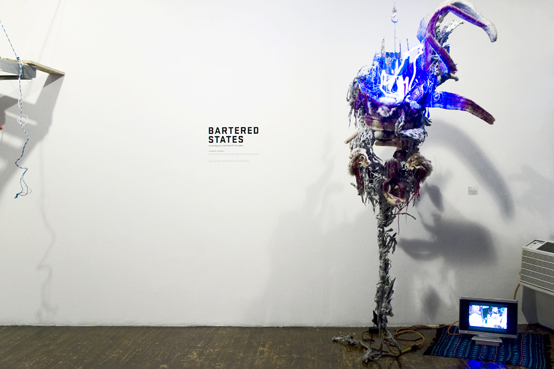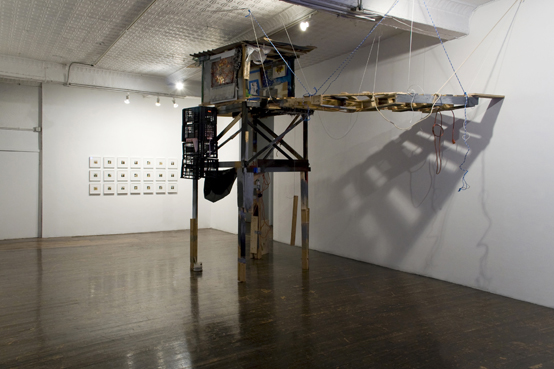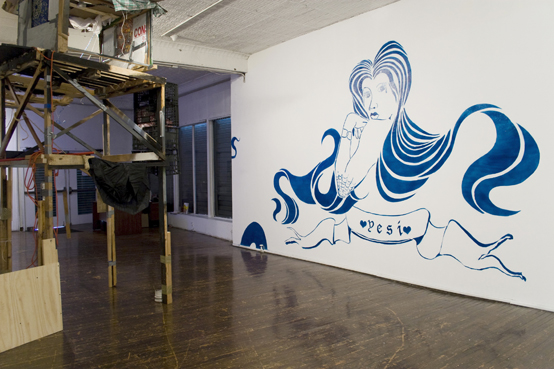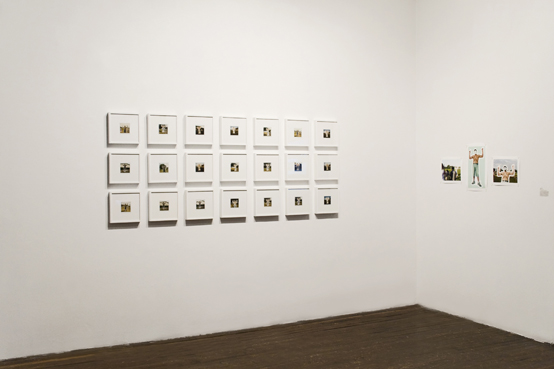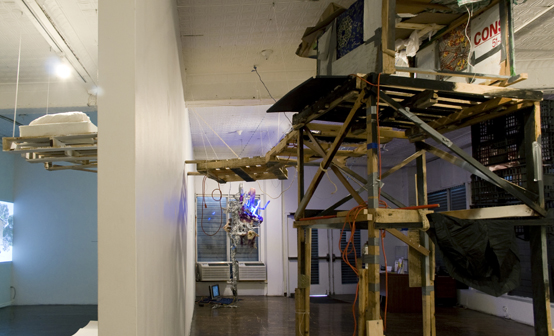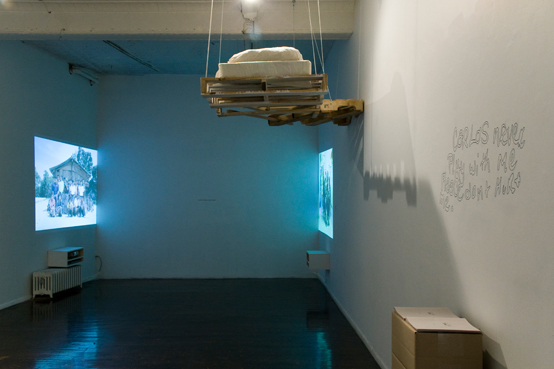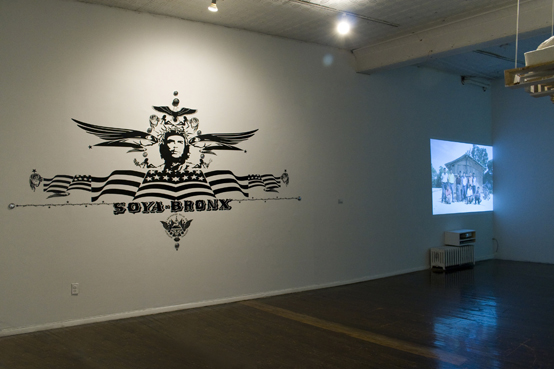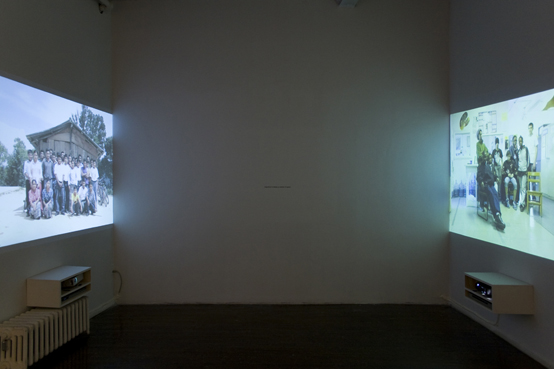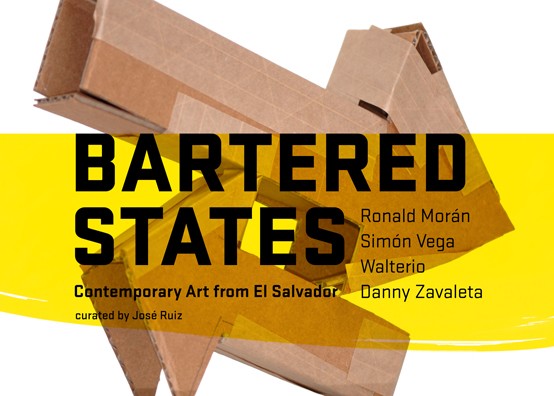
Bartered States: Contemporary Art from El Salvador
On View from May 01, 2009 – June 20, 2009
curated by José Ruiz
with a special performance: Pupusa del Coyote by Irvin Morazan
Artists:
Ronald Morán
Simón Vega
Walterio
Danny Zavaleta
The Bronx River Art Center (BRAC) proudly presents BARTERED STATES, the first leg of a cultural exchange between BRAC and the Art Museum of El Salvador (MARTE). On May 1, 2009, BRAC will open a group exhibition of new, site-specific works by four contemporary artists from El Salvador—Ronald Morán, Simón Vega, Walterio and Danny Zavaleta. The four artists will travel to New York City for two weeks to create new works within the sociopolitical context of the Bronx and NYC. The exhibition, which contains installations, actions, performances, videos and wall paintings, will be on view until June 20, 2009. During the opening reception, Salvadoran-born, NY-based artist Irvin Morazan will debut the performance, Pupusa del Coyote, commissioned by BRAC. In September 2009, the second leg of this project will take 3 NY-based Latin American artists (Karlos Carcamo, Esperanza Mayobre and Diego Medina) to El Salvador to create new works for an exhibition at MARTE. This project is curated by BRAC's Gallery Director & Curator, José Ruiz.
BARTERED STATES aims to expose the cultural relationship between the US and El Salvador, as each country enters a new era of political and social change. New Yorkers will be able to witness the psyche of a contemporary art scene, which started during the Salvadoran Civil War of the 1980s. The connection between these two countries is deeply embedded in the US support of the Salvadoran Army, which fought against the leftist guerrillas. The residual American effect is seen by many as the cause for Salvadoran illegal immigration, the major influx of illegally-earned US dollars into El Salvador, or the rapid growth of Salvadoran gangs, such as Mara Salvatruchas (MS-13), many of whom were former guerrillas.
Much of this activity comes to life through a series of underground exchanges. By investigating co-existence, dependency and reciprocity, the term to barter is deconstructed in order to dispel the notion that every exchange, even if agreed to by both parties, preserves mutual interests and expectations. When stripped from its material function (the exchange of tangible goods and services), the act of bartering can also uncover the impossible balance of power, whereby one party is at the mercy of the other, or is forced to act, stall or defend itself in order to survive. In El Salvador, these physical and psychological implications can be aligned with the realities of gang violence, the black market, immigration, political dissent and poverty. The artists in this exhibition re-interpret this complex world with critical markers that humanize the social conditions that inspire them to create art.
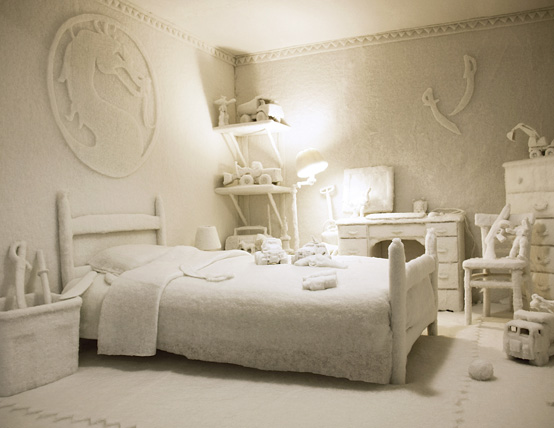
Ronald Morán’s installations explore the seeds of violence that are evident in children’s belongings and their private spaces. His life-size children’s bedrooms, made monochromatic by painstakingly wrapping each object in white fleece, create an illusion of frozen nostalgia, while softening the blow for all the hardships that a child will endure as he/she becomes an adult. Moran’s video works often enlist the participation of non-conventional participants. Therapy for a Sweet Dream (2006) is a single-channel video that documents MS-13 gang members sheepishly jumping over a fence. The gesture, which alludes to counting sheep before going to sleep, is witty and humorous but also elicits the fear that is present when living in a state of violence.
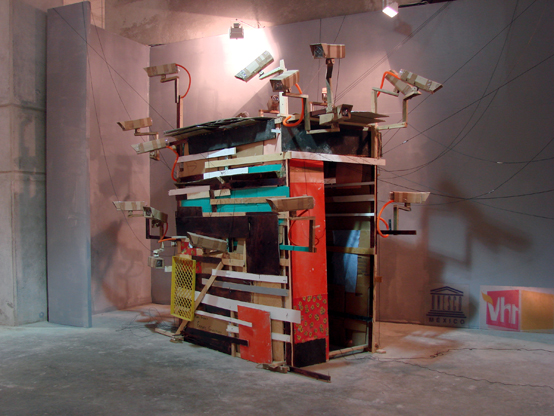
Simón Vega is interested in the appropriation and assimilation of culture as it enters the popular language. In Lost Cities, an ongoing series of ephemeral installations made of scrap wood, cardboard and other found materials, the artist addresses the social and economic disparities found in the architecture and public spaces of contemporary Central American cities. Vegas’ depictions of these sites underscore overcrowded systems of living that are filled with consumerism and waste production. In Transurbana, Vega lifts the highly visual and outlandish iconography that decorates Salvadoran transit buses and brings it into the pristine, modernist white cube. Outside of its original context, this visual cacophony reflects the deep-rooted ideals of masculinity, sexuality, religion and the obsession with the American Dream that are prevalent in popular Salvadoran society.
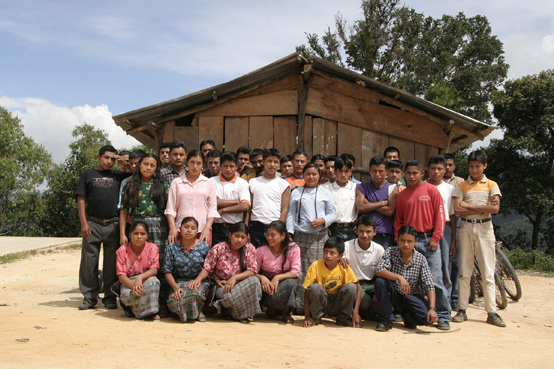
Walterio is known for documenting the subtle effects of immigration on everyday life. In his single-channel video Migration is always a matter of space (2006), the artist documents the migratory patterns of individuals and villages as they leave their hometowns for distant lands. In other related work, he studies the apparent but subtle shift in the families and villages that have remained, by recording their material growth as their family from abroad starts to send money back and invest in their local economy. The accrual of material wealth, such as new construction or the influx of foreign products, juxtaposed with the barren and underdeveloped surrounding landscape marks an uneasy transition that is evident throughout El Salvador.
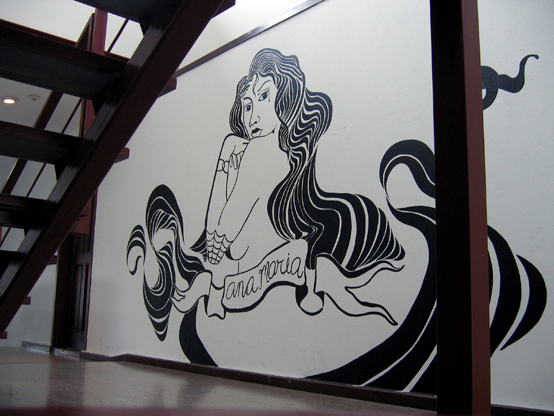
Danny Zavaleta’s work uncovers the language and social codes of Salvadoran gangs, ex-convicts and illegal street vendors to expose conflicted but rational moments of morality. In Alphabetization (2005), he dissects all of the gang signs into an alphabet book for children that simultaneously critique the gang members’ simplistic mode of communication. Wanted (2007) is a series of portraits of illegal street vendors that were posted throughout San Salvador. These "Wanted" posters ironically expose a group of lawbreakers, mostly known for selling bootleg CDs and DVDs, whom no one seems to want to catch. In Spoken Portrait (2008), Zavaleta manages to obtain the diary and photo album of a Salvadoran ex-guerrilla, ex-gang member and ex-convict that chronicles his enduring journey from the war, to the streets and through several American prisons before being ultimately deported and sentenced in El Salvador.
About the Artists:
Ronald Morán was born in San Salvador in 1972 and later studied Applied Arts at the University Matías Delgado of El Salvador. His work has been the subject of 15 solo exhibitions in different Central American countries, as well as in Austria, Mexico, Colombia and the US. Morán has participated in more than 100 group exhibitions, including Canada, Spain, Italy, China, France, Chile, the Czech Republic and the US. He has represented El Salvador at the Venice Biennial / Latin American Pavilion, the X Havana Biennial, the Central American Biennial, the Cuenca Biennial, the Caribbean Biennial in the Dominican Republic, and the Prague Biennial. In 2004, his work was included in the Art Statements category at ArtBasel Miami Beach. Morán lives and works in San Salvador, El Salvador.
Simón Vega was born in San Salvador in 1972 and spent his early youth in Panama. He studied Fine Arts at the University of Veracruz in Xalapa, Mexico and received a Masters in Contemporary Art from the Universidad Complutense in Madrid, Spain through a AEC-AECI Grant. Vega’s work has been included in international exhibitions in Portugal, Spain, Mexico and the US. He has participated in the Central American Biennials in Nicaragua and Panama and the 9th Havana Biennial (2006). His Transurbana series won him the 2nd-place prize at the Paíz Biennial (2005), and his Imperium Precarium installation won the 1st-place prize at the Emerging Artist Competition organized by the Spanish Cultural Center in San Salvador (2007). He currently lives and works in El Salvador.
Walterio (Walter Iraheta) was born in 1968 in San Salvador and later studied Applied Arts at the University Matías Delgado of El Salvador. He received scholarships from the Chicago Cultural Center, USA (1997) and the School of Visual Arts, La Esmeralda, Mexico (2000). Some of his awards include: 1st-place prize, Paiz Art Biennale of El Salvador (2007); honorable mention, Contemporary Art, Palma de Mallorca, Spain (2004); and 1st-place prize, Contemporary Art Biennial of Central American Isthmus (1998). Walterio has been the subject of more than 25 solo exhibitions and over 100 group exhibitions, such as: X Havana Biennial, Valencia Biennial and Sao Paulo Contemporary Biennial. His works are included in the collections at the Museum of Art and Design of Costa Rica, Jose Luis Cuevas Museum, Mexico City, the Art Museum of El Salvador, Art Museum of Los Angeles, MOLA, among others. He lives and works in San Ignacio, Chalatenango, El Salvador.
Danny Zavaleta was born in 1981 and later studied Fine Arts at the University of El Salvador. From his birthplace of Soyapango, an overpopulated and dangerous city, Zavaleta borrows local iconography, urban calligraphy, narratives, and clichés to report on the Central American migratory process. He has exhibited his works at Costa Rica's Contemporary Art & Design Museum (MADC), the Museum of Latin American Art in Long Beach California (MOLAA), and at the Art Museum of El Salvador (MARTE), to name a few. He was awarded the 1st-place prize in the Emerging Artist Competition (2005, 2008) at the Spanish Cultural Center in El Salvador and an honorable mention at the 5th Central American Biennial. Zavaleta lives and works in Soyapango and Ilopango, El Salvador.
About the Performance:

Irvin Morazan’s newest work, Pupusa del Coyote, is an interdisciplinary performance that mixes El Salvador’s most popular delicacy, the pupusa, with a live Mariachi band and three protagonists dressed in sensationalized Mayan attire. The artist will be preparing and giving away free pupusas outside of the Bronx River Art Center, in an act that addresses Mayan mythologies and the assumed roles of Latin Americans living in the US. Morazan was born in El Salvador in 1976 and moved to New Jersey as a child. His work has been recently shown at Jack the Pelican Presents, Exit Art, Rush Arts and Aljira, a Center for Contemporary Art. He lives and works in Brooklyn NY.
